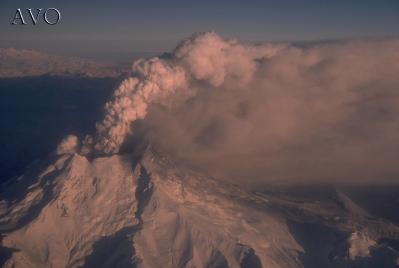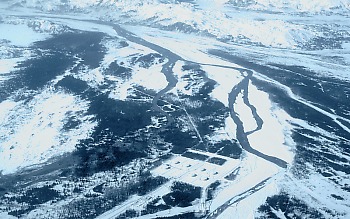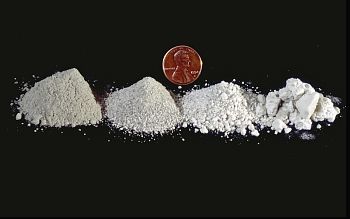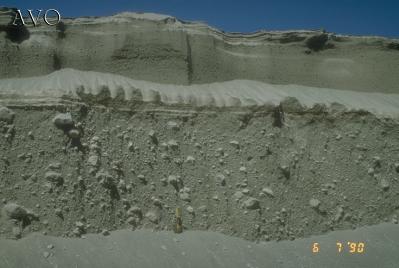Location: 175km Southwest of Anchorage
Magma Composition: Calc-alkaline andesite
to dacite
Volcano Structure: Redoubt consists of a stratovolcano that is about
10km in diameter and has a volume of around 30 to 35km2 (Miller et
al, 1998). As it can be seen from the picture the volcano has relatively
steep sides which are made up of layers of both pyroclastic
material and lava
flows and also has a crater which is filled with ice. This ice overspills
and forms a glacier on its northern face (Miller et al, 1998).
Historic Activity: Redoubt has erupted a few times during history with
the main ones occurring in 1902 then again from 1966 to 1968 and the latest
from 1989 to 1990 (Wallace et al, 2000).
Redoubt's eruptions are generally explosive and produce lava flows as well
as pyroclastic flows ( an outcrop of the 1990 pyroclastic flow deposits can
be seen in picture 4). The 1989 to 1990 eruption caused large mud flows or lahars
that threatened local oil storage facilities see picture 2 (Decker & Decker,
1991). Also during the 1989 eruption a large tephra
plume that reached altitudes of 7 to 12km posed a threat to both passenger and
military jets flying in the area.
On 15 December 1989 a large passenger plane encountered the tephra cloud 150
miles to the northeast of the volcano. The ash was sucked into the engines and
stopped them all and caused the plane to drop by some 3000 feet. It was only
after dropping by another 4000 feet that the pilot was able to restart the engines
and fly to safety (Coch, 1995). Picture 3 shows an example of what the tephra
looks like.



